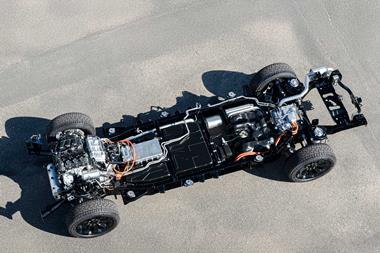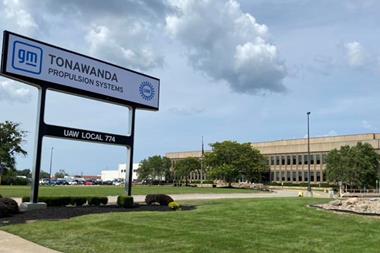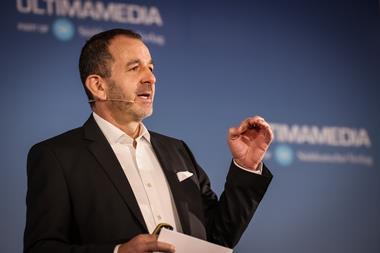
Light is a fascinating manufacturing tool enabling laser technologies and applications for materials processing tasks of all scales and sizes
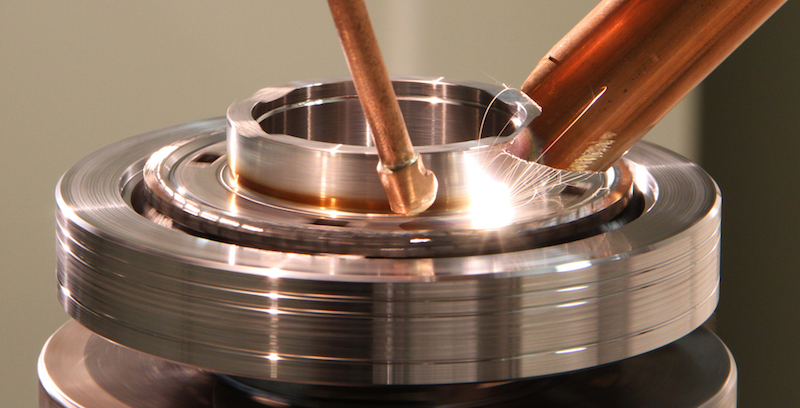 Systems for industrial laser applications like cutting, welding and surface processing are well established, reliable and cost efficient production tools with clear technical advantages due to their wear-free highly localised material interaction. Coherent-ROFIN supplies not only an entire range of high-power industrial laser sources such as fibre lasers, CO2 and diode lasers but also the consultancy for application related laser choice as well as a partnership to end customers and system manufacturers.
Systems for industrial laser applications like cutting, welding and surface processing are well established, reliable and cost efficient production tools with clear technical advantages due to their wear-free highly localised material interaction. Coherent-ROFIN supplies not only an entire range of high-power industrial laser sources such as fibre lasers, CO2 and diode lasers but also the consultancy for application related laser choice as well as a partnership to end customers and system manufacturers.
The automotive industry has been one of the driving forces behind innovative high-power laser applications. This industrial segment has stringent requirements regarding the quality and reliability of beam sources. Lasers provide a highly flexible tool that can be easily integrated with robotics and other automation to create solutions for a variety of automotive parts and materials.
Laser welding or brazing of car roofs, three-dimensional cutting or welding of automotive parts, welding or hardening of gear components, cutting of airbag material, brazing of doors and hoods, marking of day and night panels or labels are only a few examples out of a wide range of applications. More recently laser applications in the field of electric components, the processing of light-weight materials like high strength steels, aluminium, magnesium and CFRP or 3D printing of automotive parts opens up new laser based solutions in the automotive industry.

Modern combinationThe use of modern scanner technology in combination with actual fibre lasers plays an increasingly important role adding to the already known advantages of laser technology. Complex shaped 3D components can be welded with the flexibility of the scanner, making it an ideal tool for the automotive industry.
The Coherent-ROFIN HighLight FL fibre lasers are high brightness, high-power fibre lasers offering output powers from 500 W to 10,000 W– a universal tool for automotive applications. With their modular and robust design the lasers have been set-up for optimum efficiency, flexibility and reliability in applications such as cutting, welding and surface treatment.
HighLight FL lasers incorporate technical innovations with field-proven reliability into solutions that can be optimally tailored to enable higher throughput. The combination of different power levels and range of fibre core diameters allow for precise adaptation to almost any processing task. A fast power control delivers long-term stability and high process consistency in these applications.
Beam managementThe “standard” version offers a separated enclosure for beam management. Up to four fibres can be used with time or energy sharing including two channel interlocks per output and a multi-station fieldbus interface. By using different diameters of the process fibre, the beam quality can be ideally adapted to the specific application task.
The combination of a fibre laser with the Coherent-ROFIN Scanner Processing Solution opens up further possibilities to reach higher processing speeds, improved accuracy and to apply enhanced process control strategies. Due to the very fast beam positioning, downtime is nearly eliminated. The integrated overall solution includes laser, scanner control with power supply, scanner processing head and the software VLM, which allows programming the machining task and integration into the production environment in the simplest way.
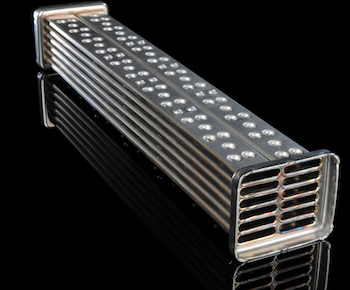 Besides the 3D scanner welding, many supplier use the 2D process for less complex components such as exhaust gas coolers
Besides the 3D scanner welding, many supplier use the 2D process for less complex components such as exhaust gas coolersWelding applicationsScanner welding has become indispensable for the daily work in the automotive industry. Besides the 3D scanner welding, many automotive sub supplier are also using the 2D scanner welding for processing less complex components, e.g. welding of tube bundles for exhaust gas coolers.
The combination of a Coherent-ROFIN fibre laser and the scanner processing solution also offers a perfect processing package for the manufacturing of battery cells for the e-mobility industry. The automotive batteries produced today are mostly lithium ion batteries. Electric vehicles have three types of battery cells in general: pouch cells, cylindrical cells and prismatic cells. The components and inner parts of the battery cells but also the battery cell housing itself can be welded using fibre lasers.
Single battery cells are connected in series or parallel within a battery module. This is realised by the electrical connection of the contact tabs/arrestors. During the welding process for contacting, the heat input must be kept at a minimum. Because high reflecting materials such as copper or aluminium have to be joined, the fibre laser with high power density in combination with a 2D scanner solution is the right choice for this application. Together with further peripheral components, several battery modules are assembled to one battery pack for use e.g. in electric cars.
The high power level of the HighLight fibre laser series supports the trend to higher production volumes and higher production speeds in battery industry but also the scanner processing solution helps to increase productivity because the laser beam can be positioned from weld to weld within milliseconds.
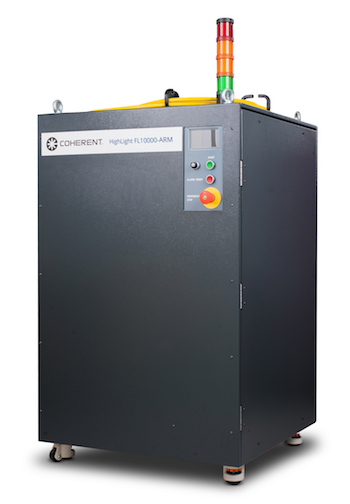 The adjustable ring mode – ARM technology provides a flexibility of benefit for demanding applications such as welding of Zn-coated steel
The adjustable ring mode – ARM technology provides a flexibility of benefit for demanding applications such as welding of Zn-coated steelPowertrain componentsBeside scanner applications, fibre lasers of the Coherent-ROFIN HighLight series play an increasingly important role in the area of powertrain components, which was a domain of CO2 lasers for a long time. A new optical design enable a spatter reduced welding process, which is necessary for these high quality demanding parts. At the same time fibre lasers offer reduced cost of ownership and easier beam delivery than CO2 lasers. The main image (opposite) shows spatter-reduced welding of a gear part using fibre lasers.
Adjustable ring mode (ARM)For more challenging welding applications in automotive industry, the Coherent fibre laser HighLight FL-ARM laser offers an intelligent solution (ARM is an acronym for adjustable ring mode). The ARM technology provides two independently controlled co-axial beams from one fibre leading to a new kind of flexibility for demanding applications such as welding of Zn-coated steel.
Historically, customers needed to add spacers (dimples) between the sheets prior to welding. A space of ~0.1 mm allowed zinc to evaporate in a controlled manner. The evaporation temperature of zinc is much lower than the melting point of steel. When welded without spacers, zinc would evaporate through the keyhole and cause blowholes and extensive spatter. The ARM technology enables a welding process with controlled evaporation of zinc through the keyhole with no spatter or blowholes.
ARM lasers use the same fibre laser technology as the standard fibre lasers in the Coherent HighLight FL series, which means they share the same excellent efficiency and feature optimum reliability through their modular and robust design.
































